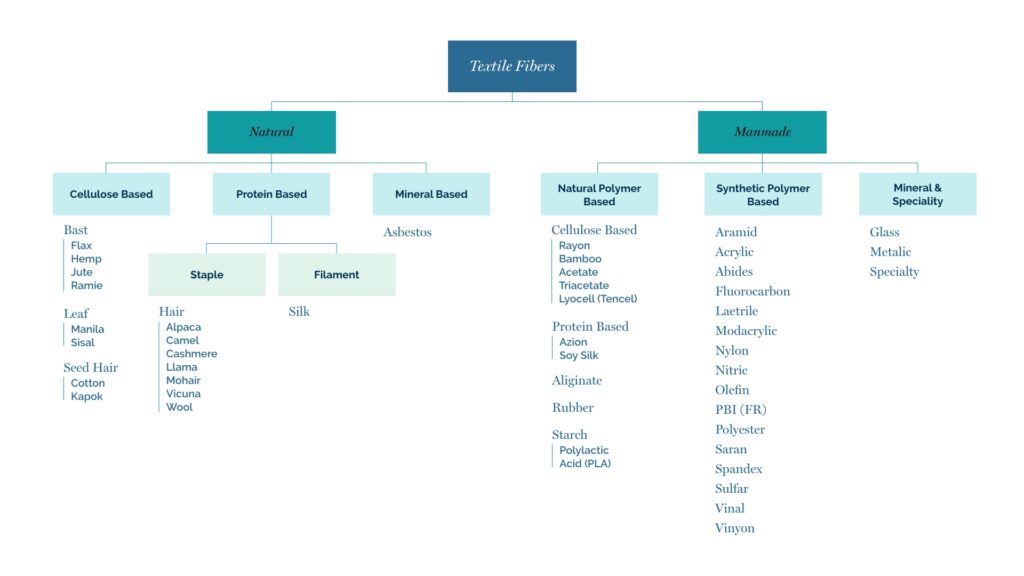Natural vs. Synthetic Fibers
Natural fibers like cotton have a significant sustainability advantage over synthetics.
When choosing between natural vs. synthetic fibers, it is important to consider the differences in how they are sourced, processed, and their potential impact on the environment. Natural fibers like cotton have a significant advantage over synthetics.
Natural Fibers are Sustainable Fibers
Natural fibers are grown, not made: They come from nature, growing from living organisms and spun into threads or yarns. Cotton is a natural vegetable fiber obtained from the seed of the cotton plant and produced on the plant in bolls.
Using cotton in your products demonstrates a commitment to sustainability and quality, which are values that matter to both stakeholders and consumers. In fact, 75% of consumers say they would pay more for apparel made from natural fibers like cotton.1
Natural Fibers vs. Synthetic Fibers: Core Differences
In contrast to synthetic, manmade fibers, natural fibers are sourced directly from nature. Natural fibers can be cellulose-based, protein-based, or mineral-based.
Because cotton comes from a plant, it is cellulose-based. Rayon is also cellulose-based, but it is manmade and chemically altered from its natural state. While both cotton and rayon can undergo processing, manmade cellulose fibers like rayon require extensive chemical modification to become usable textiles, whereas cotton retains its original cellulose structure.
Synthetic polymer-based fibers, like nylon, acrylic, spandex, and polyester, are derived from fossil fuel-based chemicals. Unlike natural fibers, these cannot fully break down. This poses an environmental threat: As synthetic textiles are laundered and eventually discarded, they leach microplastics into our waterways and oceans.2 Though small in size, microplastics are a big contributor to plastic pollution. By 2050, the weight of plastic in the ocean could exceed that of fish (by weight).3
Cotton can break down in nature much faster than man-made fibers, no matter how it is finished or treated.4 While synthetic fabrics contribute to the microplastic crisis, cotton can biodegrade5 and return to the earth6.

Cotton is the Natural Choice
Cotton fiber is particularly well-suited for apparel and home textiles because of its strength, durability, comfort, and temperature regulation. And with a range of performance technologies, cotton has the versatility to compete with synthetics in a wide range of applications.
From how it’s grown and produced to how it’s used, reused, and biodegraded, cotton can be considered a more sustainable fiber than synthetics. Cotton is a naturally circular fiber working with the cycle of nature instead of against it. Cotton’s properties as a natural fiber help it create sustainable textile and nonwoven products, making it a natural alternative to synthetics.
Cotton CircularityUnraveling Natural vs. Synthetic Fibers
Want to become a fiber expert? Download our Textile Fibers Guide for a full classification of natural and manmade textile fibers, including details on cotton’s cultivation, growth, and physical properties.
Microplastic, Big Problem
Did you know each person potentially consumes, on average 0.1–5 g of microplastics, which could be up to a credit card’s worth of microplastics by weight every week?7 While this is a preliminary estimate it may serve as a basis for future investigations and human health risk assessments. A major advantage of natural fibers like cotton is they don’t contain plastic microfibers that contribute to the global microplastic pollution problem. Unlike synthetics, cotton fibers can break down8 and return to nature.
Choose Sustainable Fibers

Regardless of the sector, whether agriculture, apparel, or manufacturing, understanding fiber facts is important to stakeholders and consumers. When deciding between natural fibers vs. synthetic fibers, it’s important to consider their impacts on your brand’s sustainability goals and reputation for responsibility and quality.
Manmade fibers, also known as manufactured fibers, are often derived from petroleum-based materials like plastic, which could pose significant environmental risks. Choosing cotton means choosing circular possibilities for your brand and less microplastics for our planet.
Page References
Cotton Incorporated’s Lifestyle Monitor™ Survey, 2024
Boucher, J., & Friot, D. (2017). Primary microplastics in the oceans : a global evaluation of sources. IUCN. https://doi.org/10.2305/IUCN.CH.2017.01.en
Ellen MacArthur Foundation. (2017). The New Plastics Economy: Rethinking the future of plastics & catalysing action. https://www.ellenmacarthurfoundation.org/the-new-plastics-economy-rethinking-the-future-of-plastics-and-catalysing
Zambrano, M. C., Pawlak, J. J., Daystar, J., Ankeny, M., & Venditti, R. A. (2021). Impact of dyes and finishes on the aquatic biodegradability of cotton textile fibers and microfibers released on laundering clothes: Correlations between enzyme adsorption and activity and biodegradation rates. Marine Pollution Bulletin, 165. https://doi.org/10.1016/j.marpolbul.2021.112030
Ankeny, M., Daystar, J., Goller, C. C., Pawlak, J. J., Venditti, R. A., & Zambrano, M. C. (2020). Aerobic biodegradation in freshwater and marine environments of textile microfibers generated in clothes laundering: Effects of cellulose and polyester-based microfibers on the microbiome. Marine Pollution Bulletin, 151. https://doi.org/10.1016/j.marpolbul.2019.110826
Lili, M. F., & Browning, K. J. (2010). Biodegradability Study on Cotton and Polyester Fabrics, 5(4). Retrieved from https://journals.sagepub.com/doi/ abs/10.1177/155892501000500406; In composting tests, cotton fabric samples lost 50-77% of weight after 90 days (Li, Lili; Frey, Margaret; Browning, Kristie (2010). Biodegradability study on cotton and polyester fabrics. Journal of Engineered Fiber and Fabrics, 5(4), 42-53.)
Senathirajah, K., Attwood, S., Bhagwat, G., Carbery, M., Wilson, S., & Palanisami, T. (2020). Estimation of the mass of microplastics ingested – A pivotal first step towards human health risk assessment. Journal of Hazardous Materials, 404(B). https://doi.org/10.1016/j.jhazmat.2020.124004
Zambrano, M. C., Pawlak, J. J., Daystar, J., Ankeny, M., Cheng, J. J., & Venditti, R. A. (2019). Microfibers generated from the laundering of cotton, rayon and polyester based fabrics and their aquatic biodegradation. Marine Pollution Bulletin, 142, 394-407. https://doi.org/10.1016/j.marpolbul.2019.02.062